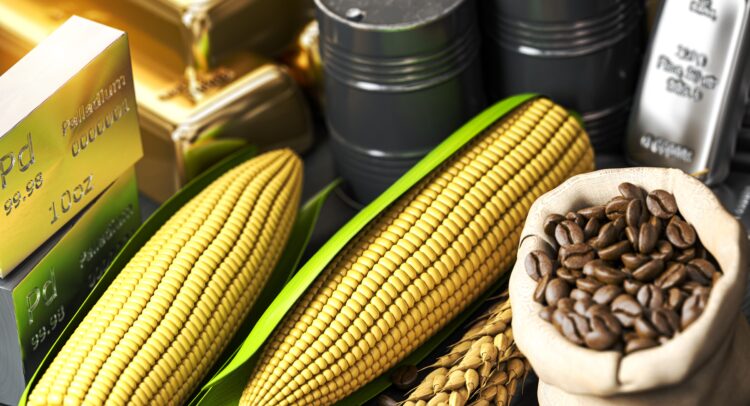When you think about Forex, you probably don’t think about things like gold (XAU-USD), oil (CM:CL), and coffee. However, they aren’t just for futures traders and breakfast enthusiasts; they have a cozy relationship with Forex markets, influencing currency values in ways that might surprise you.
Claim 70% Off TipRanks This Holiday Season
- Unlock hedge fund-level data and powerful investing tools for smarter, sharper decisions
- Stay ahead of the market with the latest news and analysis and maximize your portfolio's potential
Commodities and currencies are like two drama queens at a high school reunion—they’re always affecting each other. The value of a country’s currency is often tied to its main exports. When the price of these commodities fluctuates, so does the currency of these nations. Some examples include:
- Oil and USD-CAD: Canada, with its vast oil reserves, sees its currency (CAD) rise and fall with the price of oil. When oil prices go up, the CAD tends to strengthen against the USD. If oil prices plummet, the CAD typically takes a hit.
- Gold and AUD-USD: Australia is one of the world’s largest gold producers. The AUD often moves in tandem with gold prices. If gold prices soar, the AUD gets a boost against the USD. Conversely, a drop in gold prices usually drags the AUD down.
- Silver and USD-MXN: Mexico is a significant silver exporter. The Mexican peso (MXN) often follows the silver market. Higher silver prices can lead to a stronger MXN against the USD, while lower prices can weaken it.
- Coffee and BRL-USD: Brazil is the world’s largest coffee exporter. The Brazilian real (BRL) is correlated with coffee prices. A surge in coffee prices can strengthen the BRL against the USD, and a decline can weaken it.
- NZD-USD (Dairy): The Kiwi dollar is heavily influenced by dairy prices. Keep an eye on the Global Dairy Trade auctions.
Practical Tips for Traders
Commodities and Forex markets are like two sides of the same coin. By understanding their relationship, you can make more informed trading decisions and possibly avoid some nasty surprises. Here are some practical tips for traders:
- Keep an Eye on Commodity News: Major commodity price movements often precede Forex pair movements.
- Understand Economic Dependencies: Know which countries rely heavily on specific commodities.
- Use Correlation Data: Historical data can help predict how currency pairs might move in response to commodity price changes.
















